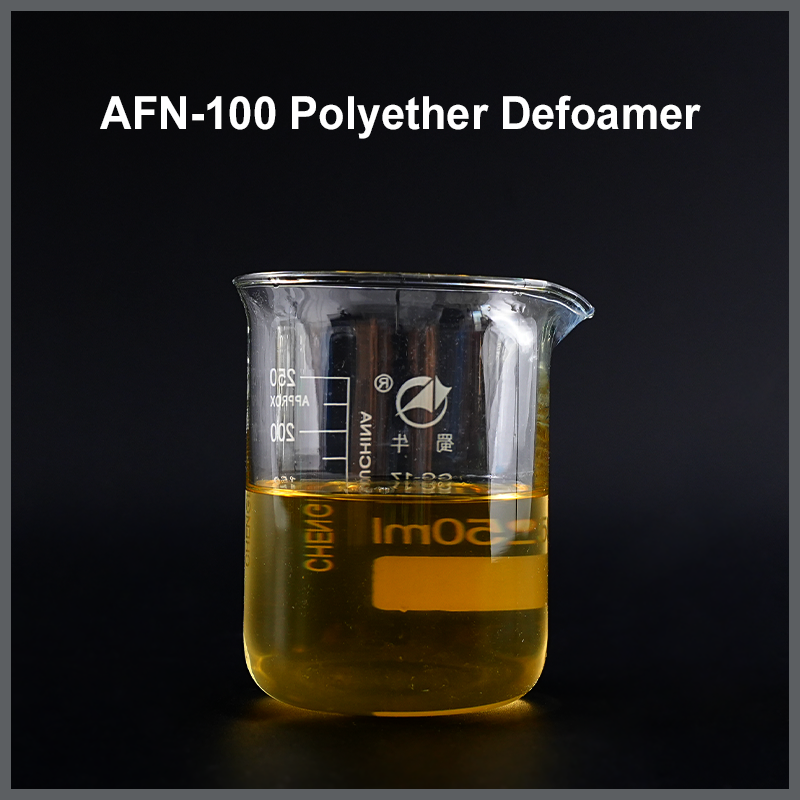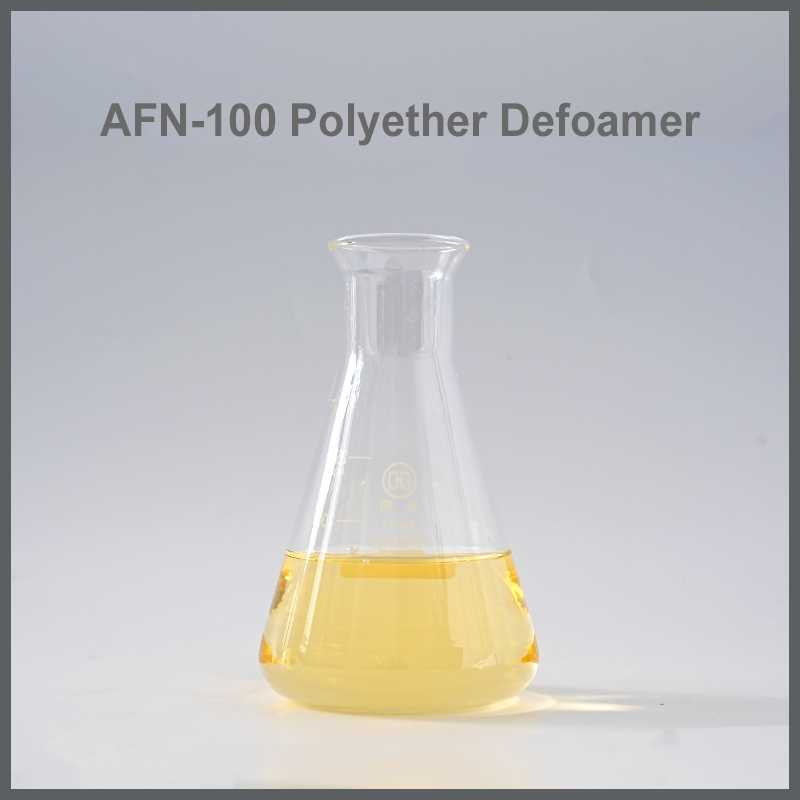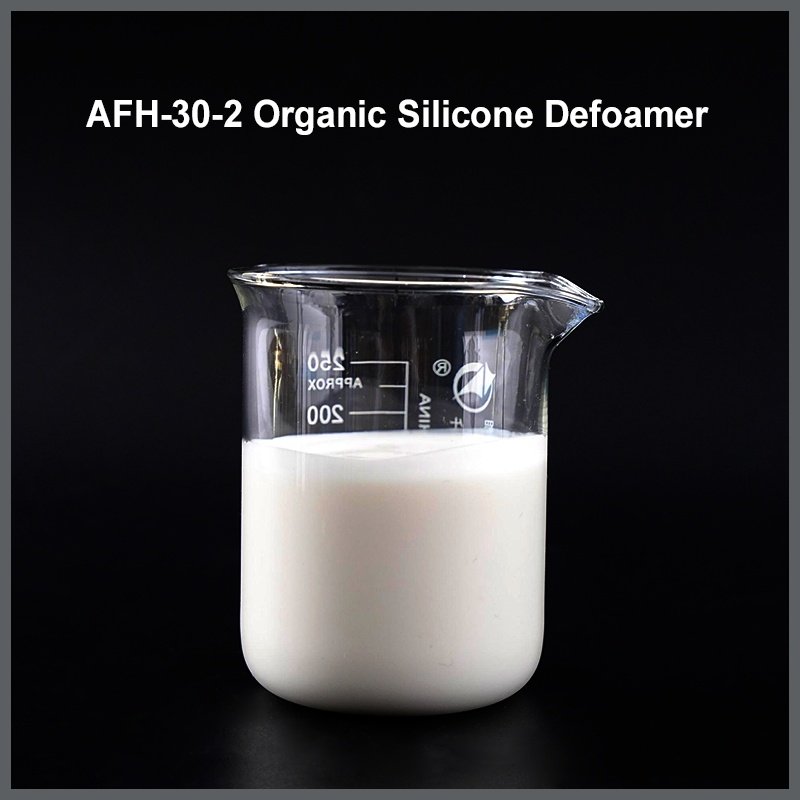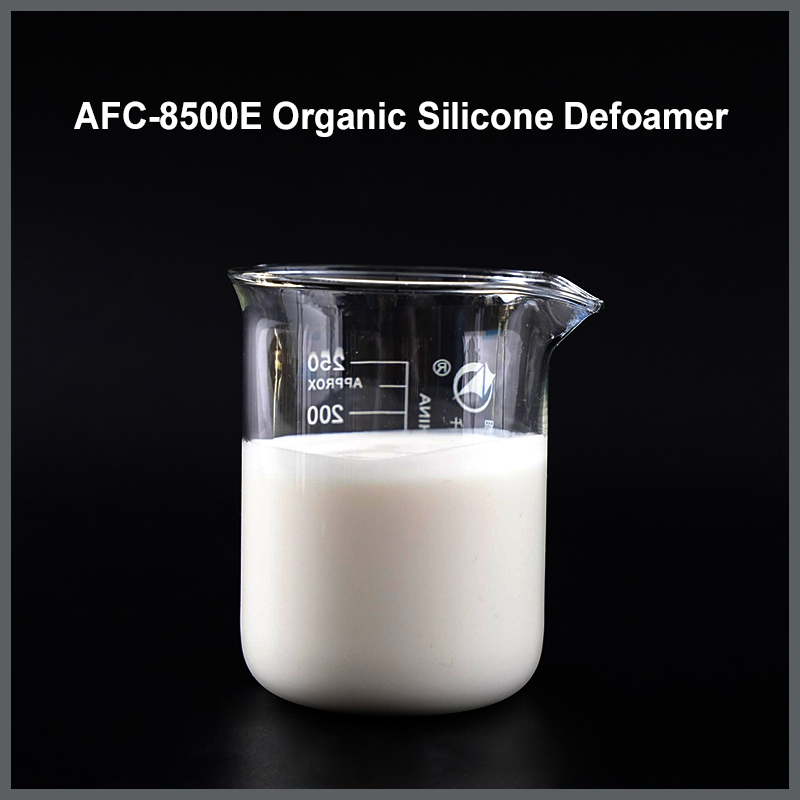products
AFN-100 Polyether Defoamer
Compared to traditional non-silicone defoamers, AFN-100 offers longer-lasting effectiveness. Compared to silicone-based products, it is less prone to oil flotation, exhibits better compatibility, and provides uniform and stable dispersion, ensuring long-term operation without affecting system performance. Choosing AFN-100 can help you achieve more stable and economical oil extraction and processing processes.

◼PRODUCT DESCRIPTION
AFN-100 is a polyether ester defoamer synthesized by a special process. It is superior to traditional non-silicon defoamers in defoaming, foam suppression and durability, while effectively avoiding the shortcomings of silicone defoamers such as poor affinity and easy oil floating.
◼FEATURES
Good dispersibility and compatibility.
Good chemical stability.
Long-lasting anti-foaming.
◼APPLICATION AREA
Petroleum oil and gas separation defoamer is used for oil and gas separation in delayed coking, refining or oil field processes, and is especially suitable for oil and gas separation defoamer in natural gas-based oil production processes.


◼APPLICATION AREA
Recommended Dosage: Petroleum oil and gas separation defoamer can be added directly to the foaming liquid. Alternatively, dilute it with a petroleum solvent (such as kerosene or xylene) and then add the diluent to the foaming system using a metering pump. This allows the defoamer to quickly disperse into the foaming system, effectively achieving its defoaming effect. The optimal dosage is determined based on specific testing.
Recommended dosage: 0.1% to 0.8%, with the optimal dosage determined based on specific testing.


◼Application of oil and gas separation defoamer in petroleum
Oil and gas separation is a critical step in oil extraction and primary processing. However, natural surfactants and drilling additives in the formation are highly susceptible to forming stable, stubborn foam under high pressure. This foam can lead to a series of serious problems:
I. Core Issues (Pain Points)
Impaired Separation Efficiency: Foam occupies a significant amount of space in the separator, resulting in incomplete oil and gas separation, gas inclusion in the crude oil (and vice versa), and impacting product purity.
Reduced Processing Capacity: To prevent foam overflow, the liquid feed rate must be reduced, reducing the separation unit's processing capacity and impacting overall production efficiency.
Metering Errors and Liquid Level Distortion: Foam can cause liquid level control failures, impacting the accuracy of automatic control systems, and potentially leading to misoperation.
Increased Safety Risks: Foam can cause tank overflows, resulting in not only crude oil losses but also environmental pollution and fire hazards.

II. Functions and Requirements of Defoamers:
Defoamers specifically developed for oil and gas separation (such as AFN-100) can quickly break down foam and inhibit its regeneration, thereby:
Majorly improving separation efficiency, ensuring the quality and yield of crude oil and natural gas output.
Fully utilizing the design capabilities of separation equipment to improve production efficiency.
Ensuring safe and stable production operations and reducing accident risks.

This type of defoamer must have extremely high chemical stability and be able to withstand the complex components in crude oil; have excellent resistance to high temperature and high pressure to adapt to the harsh environment of downhole and separators; and have good dispersibility and be able to take effect quickly.
Summary: Oil and gas separation defoaming agent is an indispensable auxiliary agent to ensure safe, efficient and stable production in the petroleum industry, and is directly related to production benefits and operating costs.
Request a Quote
Related Recommendations








